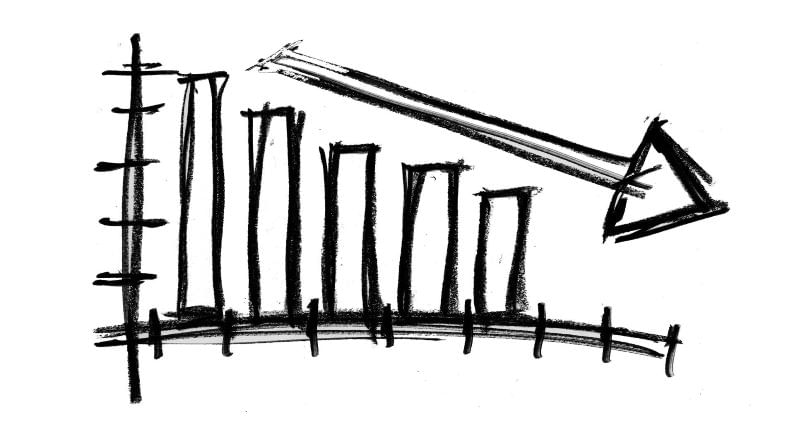April headline numbers deceptive; economy in trough as consumer sentiment hit: Report
Despite the base effect-led spike in growth of many sectoral indicators in April, the slackening momentum, driven by the second wave of the pandemic has emerged as a major concern
- Press Trust of India
- Last Updated : May 19, 2021, 17:29 IST

Mumbai: Uptick in headline numbers of key economic indicators in April is due to the base effect and that the economy is headed into a rough patch as consumer sentiment is down in the dumps due to the second wave of the pandemic, according to rating agency ICRA.
Despite the base effect-led spike in growth of many sectoral indicators in April, the slackening momentum, driven by the second wave of the pandemic has emerged as a major concern.
Moreover, the bruised consumer sentiment and the high healthcare and fuel bills will limit discretionary purchases in the immediate term, in addition to the expected cut-back in spending on contact-intensive services, leading to a negative overall impact on the economy, the agency said on Wednesday.
“As expected, the shrunken base of the nationwide lockdown in April 2020 has boosted the pace of year-on-year expansion of several high-frequency indicators in April 2021, resulting in a widespread improvement compared to the performance in March 2021.
“However, the optimism generated by this trend is limited, as eight of the 13 non-financial indicators in April remained below their pre-Covid-19, i.e. at April 2019 levels,” ICRA Chief Economist Aditi Nayar said.
She added that indicators such as GST e-way bills, electricity generation, vehicle registrations and rail freight traffic have slowed down and lost the sequential momentum in April, reflecting the rise in the pandemic infections cases and localised lockdowns.
The early data available for May confirms that this trend is continuing, as the lockdowns have both been extended, and spread to other states, to curb the second wave of the pandemic, Nayar said.
The annualised performance of 14 of the 15 high-frequency indicators (except bank deposits) tracked by the agency improved in April over March.
As expected, the pace of this improvement was exceptionally high in several sectors such as automobiles output, vehicle registrations, non-oil merchandise exports, and GST e-way bills on account of the low base related to the nationwide lockdown that was in effect in April 2020, she said.
She also said the record high GST collection in April at over Rs 1.41 lakh crore is an aberration and the government will seen its revenues doing down going ahead forcing it to depend more on market borrowings.
Given the distorted base, the agency has compared the performance of these indicators in April 2021 to April 2019, to gauge the momentum of activity across sectors.
Discouragingly, eight of the 13 non-financial indicators recorded lower volumes in April relative to April 2019. This sub-set includes domestic air traffic, vehicle registrations, auto output, petrol and diesel consumption, as well as the output of Coal India.
In contrast, power generation, rail freight, port cargo traffic, generation of GST e-way bills and non-oil merchandise exports recorded higher volumes in April relative to April 2019.
On the impact of the pandemic, Nayar said the sharp spike in daily infections in the second wave will have a prolonged negative impact on consumer sentiment. Also, the substantial increase in healthcare bills due to the pandemic, along with high retail prices of fuels, are likely to squeeze disposable incomes in the urban as well as rural areas.
Moreover, after the satiation of the pent-up demand seen during the festive season in 2020, demand for many varieties of consumer durables may be low. “Overall, we expect discretionary spending on consumer durables and areas such as home improvements may be limited in the near-term, in addition to the expected cut back in spending on contact-intensive services,” Nayar added.
Download Money9 App for the latest updates on Personal Finance.
Related
- होंडा ने हेडलाइट समस्या को ठीक करने के लिए वापस मंगवाई CB300R मोटरसाइकिलें
- RBI ने लगातार दूसरी बार रेपो दर में कटौती की, कर्ज होंगे सस्ते
- Tata Motors की वैश्विक थोक बिक्री चौथी तिमाही में 3% घटकर 366177 इकाई
- सुरक्षा मानदंडों को पूरा करने की बढ़ती लागत की वजह से दाम बढ़ा रही हैं कार कंपनियां
- ओला इलेक्ट्रिक ने S1 Zen3 स्कूटर की आपूर्ति शुरू की
- बासमती चावल पर GI टैग पाने के लिए भिड़े भारत- पाकिस्तान, क्यों खास है यूरोपियन यूनियन की ये मुहर

